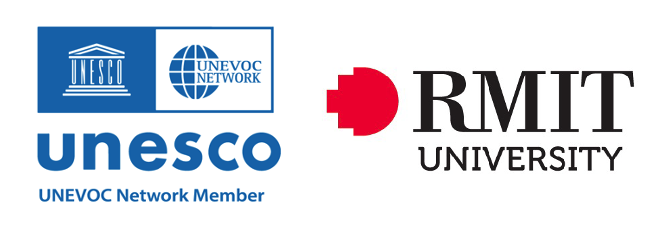Authors: Peter Kelly & James Goring
Following on from Part 1 and Part 2 in this series, this post will look at what EY calls Mega-Trends
In EY’s schema Megatrends emerge from the diverse, and often unpredictable, interactions of Primary Forces over the medium term future. They suggest that it is possible to identify/imagine a wide range of Megatrends.
In the ways that we are engaging with these Megatrends we see significant entanglements between what EY identifies as the Techonomic cold war, the Behavioural Economy, the Future of Thinking, and Work and Life Unbounded in shaping the COVID-19 worlds in which young people will live their futures.

Techonomic cold war
As we have seen in the first 6 months of the pandemic, the massive fault lines of inequality, injustice, racism, the forced mass movements of millions of asylum seekers and refugees, and the global and national social, political and economic tensions that characterised the world in which COVID-19 emerged, have been amplified. Dialled up to 10+
And these forces are not likely to be turned down anytime soon.

For EY, many of these forces of populism and nationalism – fuelled by decades of a growth in inequalities, marginalisation, exclusion and disadvantage – are not going anywhere, and will shape global, national and local social, economic and political forces and outcomes over the next 10 years.
Populist and nationalist leaders have been gaining power across the world. To varying degrees, such leaders have interventionist and protectionist instincts, as well as an appetite for bucking long-standing policies and norms. The fact that such leaders are emerging in democracies is shifting long-standing norms across the global system.
(p.32)
We don’t view populism and nationalism as passing fads…Regardless of the back-and-forth of individual election results, populism is here to stay because the forces driving it, such as economic inequality and job displacement, are long term trends.
(p.33)
The net result of these trends could be an increasingly balkanized global economy…The techonomic cold war threatens the mechanisms that make global operations possible.
(p.36)
Behavioural Economy

For EY, and many other academic and non-academic commentators including, for example, Shoshan Zuboff in Surveillance Capitalism, human behaviours are the new, emerging raw materials of processes that seek to commodify, monetise and extract profit from the material and immaterial world – the differing but increasingly connected worlds of things and thoughts, materials and emotions, technologies and behaviours.
The future of behavior is upon us. Human behavior is becoming a commodity — quantified, standardized, packaged and traded, much as consumer data is today. This commoditization, combined with the maturing of disciplines such as behavioral economics and affective computing, will give companies and governments the ability to influence and shape our behavior as never before.
(p.39)
The combination of behavioral economics and affective computing creates a potent toolkit. It will allow platforms and interfaces not just to analyze and simulate behavior but, ultimately, to influence behavior in ways that are highly customizable even at a large scale. This is already starting to happen. For instance, social media platforms have used consumer data and BE principles to motivate people to vote in elections.
(p.41)
Future of Thinking
Many of us have long wondered about the consequences of outsourcing our memories (I’m not sure, I’ll Google that!), of changes in our attention spans as we risk ‘drowning’ in a torrent of data and possibilities, of determining what is true and real in a (post-truth) world of ‘fake news’ and ‘alternative facts’.
All technologies shape and change human behaviours and thinking. The 15th century invention of the printing press produced a world of the printed word and the emergence of mass, compulsory education systems that could produce ‘literate citizens’. The changes we are currently witnessing, experiencing and expecting might just be of a different order.
Technology is profoundly changing how we think. Yet while we’ve all experienced the dramatic effect that social media and smartphones have on behavior and cognition, there could be even broader effects from the coming wave of human-augmentation technologies, such as AI, robots and autonomous vehicles. This will create significant challenges for not only us as individuals, but for companies and governments in terms of how they interact with customers, employees and citizens.
(p.50)
We are already seeing the effects of social media on societal cohesion and democracy. What will the next generation of technologies do to informed citizenship, trust and our shared sense of reality?
(p.54)
Work and Life Unbounded

In The Self as Enterprise we provided a wide-ranging examination of the ways in which neo-liberal capitalism requires us all to imagine ourselves as an ‘enterprise’, requires us all to be, or become, rational, choice making autonomous and risk aware in order to secure a less parlous form of salvation in increasingly precarious and risky worlds of work. And to carry the consequences for the choices we make, or do not make, in these circumstances.
‘Choice’ here is both ironic and ambiguous – and is possibly best exemplified in a chapter which suggests that for some of us work (remember the irony!) is Better than Sex, while for far too many others it is Toil and Drudgery.
EY’s Work and Life Unbounded touches on many of these issues. But possibly in less ironic and ambiguous ways. And in ways that are less critical and more oriented to the challenges for business opportunities and models of some of these emergences.
For EY, what it calls the ‘four major components of life’s portfolio — work, leisure, learning and retirement’, have been in the process of disruption for a number of decades, and this disruption will likely be amplified as a consequence of the interaction of Primary Forces and COVID-19. (p.56)
In this sense, the question can be asked:
What lies beyond? The future of work, leisure and learning is much more than the sum of these individual shifts. It promises to undo the boundaries between work, leisure and learning, fundamentally reshaping the institutions and norms we take for granted — from higher education to weekends to retirement savings.
(p.58)
In terms of work:
Automation has the potential to significantly reduce the amount of time spent on work, albeit by inevitably taking over much work traditionally done by humans. That will theoretically allow us to focus on more creative and nuanced work, leaving drudge labor to machines, while technology’s enablement of more flexible, on-demand working arrangements promises to further erode the boundaries of the nine-to-five workday.
(p.58)
And, in terms of time away from work:
The erosion of the five-day, 40-hour week could eliminate the concept of weekends as we know them. The norm of giving the vast majority of society the same two days off helps build social cohesion, and its loss could undermine social capital at a time when it is already being depleted.
(p.58)
EY sees the biggest changes coming in the ways in which we understand education, what it is, when it happens, who does it:
The education sector is largely tradition-bound and slow to change, but our legacy educational institutions will soon find themselves increasingly misaligned with the future of work. To remain relevant in a world of ever-faster disruption…education will be transformed to become truly lifelong. Individuals will take time off for learning repeatedly over the course of their lives.
(p.59)
Future Back Thinking? Back to the Future Thinking?
So, what do we do with this sort of ‘futures thinking’?
As we have already indicated, there are a number of ways in which we can critique and find issue with the work that EY does in the Mega-Trend series. Not so much in terms of the research and data that it draws on, and the analysis that it produces. And not so much in terms of the futures that EY imagines as a consequence of this research and analysis.
Indeed, the concepts of Primary Forces and Mega-Trends provide a useful way to organise futures thinking.
The main concerns we want to close this post with are with what EY glosses over, or omits entirely, from their futures thinking.
Put simply, these omissions are about our pasts and presents. Are about the histories of the futures that EY imagines.
Pasts and presents in which large numbers of people (young and old) experience the world and their places in it in terms that are overwhelmingly about marginalisation, disadvantage, struggle, precariousness, risk, racism, dispossession, exploitation, hate.
Pasts and presents in which capitalism tends to monopoly, tends to ‘kill’ competition in the name of market share, tends to exploit all and everything if it can imagine value and profit, tends to abandon people, places, regions and countries when that value and profit is exhausted.
Pasts and presents which have – in terms of capitalism’s regular crises, the climate crisis, and the emergence of COVID-19 – set the scene for the ‘critical uncertainties’ that we and young people face in the short, medium and longer term.
These omissions must be made present in the futures thinking that we do in a COVID-19 world.
The final post in the series explores how these Primary Forces and Mega-Trends can inform the processes of scenario planning that we are undertaking with our partners at the Inner Northern LLEN in the project COVID-19 Recovery Scenarios for Young People in Melbourne’s Inner North.
Featured Image credit.

